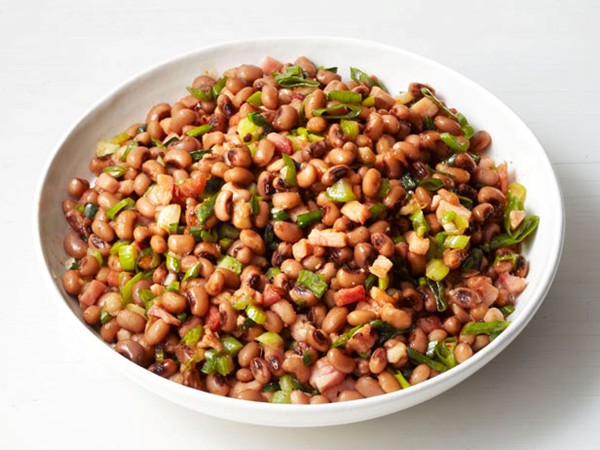Lucky foods for the new year
December 31, 2015 by Darcie
When you ring in the new year you probably participate in a few traditions such as a champagne toast or a midnight countdown. Many cultures also feature traditional foods to eat as the new year commences, usually meant to help bring good fortune for the coming year. Epicurious takes a look at some of these traditions, which range from culture to culture but contain many of the same themes.
Grapes play an important role in Spain, where revelers consumer 12 grapes just as the clock strikes midnight, each grape representing a coming month in the new year. If you get a sour grape, it might represent a rocky month. This ritual “dates back to 1909, when grape growers in the Alicante region of Spain initiated the practice to take care of a grape surplus. The idea stuck, spreading to Portugal as well as former Spanish and Portuguese colonies such as Venezuela, Cuba, Mexico, Ecuador, and Peru.”
Beans and greens are well represented. It’s thought that the greens represent paper money and the beans resemble coins (as in the Hoppin’ John above), so eating a large quantity will increase your fortune in the coming year (I can think of another thing eating a lot of those foods will probably increase). These two foods can be found in the rituals of many cultures. Says Epicurious, “In Italy, it’s customary to eat cotechino con lenticchie or sausages and green lentils, just after midnight-a particularly propitious meal because pork has its own lucky associations. Germans also partner legumes and pork, usually lentil or split pea soup with sausage. In Brazil, the first meal of the New Year is usually lentil soup or lentils and rice, and in Japan, the osechi-ryori, a group of symbolic dishes eaten during the first three days of the new year, includes sweet black beans called kuro-mame.”
Other foods associated with good fortune include pork, fish, cakes and other baked goods. Conversely, a few items are associated with bad luck and people are encouraged to avoid these foods on New Year’s. This list include lobster, which is to be avoided “because they move backwards and could therefore lead to setbacks.” Chicken and other fowl are also discouraged because chickens scratch backwards, “which could cause regret or dwelling on the past,” and because good luck might take flight with the winged creatures.
What traditional New Year’s foods will you be eating tonight or tomorrow?
Photo of Hoppin’ John from
Food Network Magazine
Categories
- All Posts (6940)
- Antipasto (2135)
- Author Articles (247)
- Book News (935)
- Cookbook Giveaways (983)
- Cookbook Lovers (257)
- Cooking Tips (109)
- Culinary News (299)
- Food Biz People (552)
- Food Online (791)
- Holidays & Celebrations (272)
- New Cookbooks (149)
- Recipes (1500)
- Shelf Life With Susie (231)
- What's New on EYB (133)
Archives
Latest Comments
- Atroyer7 on Danube Cookbook Review and Giveaway
- demomcook on What foods do you look forward to the most for each season?
- demomcook on Danube Cookbook Review and Giveaway
- Darcie on How cookbooks can help build resilience
- mholson3 on Danube Cookbook Review and Giveaway
- Rinshin on How cookbooks can help build resilience
- sarahawker on Danube Cookbook Review and Giveaway
- Sand9 on Danube Cookbook Review and Giveaway
- hankintoby29 on Heritage Cookies of the Mediterranean World – Cookbook Giveaway
- WBB613 on Feasts of Good Fortune Cookbook Giveaway